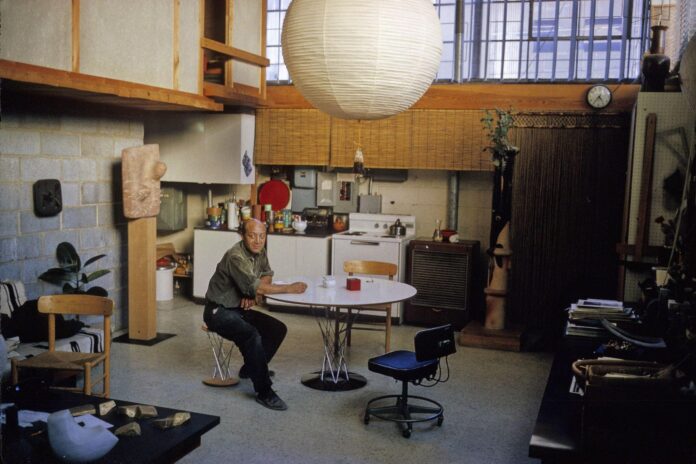The studio of Isamu Noguchi will open to the public for the first time in its history, after it undergoes an extensive restoration and renovation. Plans for the repair were announced last week by New York City’s Department of Cultural Affairs (DCLA), which has awarded the Noguchi Museum in Queens $4.5m in capital funding to support the project. The museum is located opposite the building that houses the famed artist and architect’s working space as well as his former residence.
“It was the centre of his artistic practice in New York for nearly three decades,” Brett Littman, the Noguchi Museum’s director, says. “Noguchi used the space to store sculptures, to stage models of sculptures and public projects he was working on, to entertain guests and as a pied-à-terre.
“We think the Studio can further illuminate how Noguchi lived and worked, and are excited to be able to share this with the public once our project is complete.”
Noguchi purchased the studio in 1961, when he relocated from Manhattan’s Greenwich Village to Long Island City in Queens. The 3,200 sq. ft warehouse provided him with far more space, allowing him to work on a large scale and in greater privacy. Collaborating with Yukio Madokoro, a skilled carpenter from Japan, he built living quarters there, too, dividing the area with cement block walls.
“Downstairs there was a living room and kitchen with Noguchi-designed tables and a simple foam rubber sofa with bolsters. In the bathroom he installed a traditional Japanese wooden tub,” Hayden Herrera writes in her 2015 biography of Noguchi, Listening to Stone. “A flight of stairs led to a bedroom that Noguchi arranged in Japanese style with shoji screens (fitted with fibreglass instead of paper) and a low bed. At the foot of the stairs was a tsukubai, or stone basin, for washing, and, level with the floor, a flat stone carved to look like the sole of a foot. This was the designated spot where guests took off their shoes and put on Japanese sandals before mounting the stairs.
Herrera wrote: “Noguchi’s new space was, he said, ‘A workshop with living quarter … not exactly a home.’”
In 1975, needing even more space, Noguchi purchased the brick building that is now part of the Noguchi Museum, and later, a neighbouring gas station that he replaced with a concrete pavilion—what would become the museum’s entrance point. He continued using his studio on 10th Street until his death in 1988.

Brett Littman, Laurie Cumbo, Donovan Richards, Malcom Nolen, Lucy Lamphere and Hiroko Murase in Isamu Noguchi’s home and studio Photo: Don Stahl. © The Isamu Noguchi Foundation and Garden Museum, NY /
Artists Rights Society
Now more than 60 years old, the former warehouse needs a new roof and windows, and its brick façade needs repair. “The first and most important goal of this project is to stabilise and preserve the overall building, and to make it a space that can welcome public visitors for the first time,” Littman says. “The living quarters will be restored and Noguchi’s original furnishings will be reinstalled where possible.”
The museum will offer public tours of these living spaces, which have rarely been seen. Once the project is complete, visitors will also have access to a new café and shop. The Noguchi Museum declined to provide further details about the preservation as it is still in the design phase.
The funds for the renovation are part of more than $220m in capital funding for 70 cultural groups citywide, awarded by City Hall, City Council and Borough Presidents. Of the $4.5m allocated to the Noguchi Museum, $1.5m came from Mayor Eric Adams and the rest from Queens Borough President Donovan Richards. Other institutions in Queens that received financial support include the Queens Museum, Flux Factory and Queens Theatre.
“The extraordinary diversity and energy of Queens is reflected in its cultural organisations, and we’re thrilled to invest in these projects that will give local residents and visitors from all over access to the remarkable cultural facilities they deserve,” Cultural Affairs Commissioner Laurie Cumbo said in a statement. “These projects are part of the city’s long-term investment in the cultural community of Queens and across all five boroughs.”

























